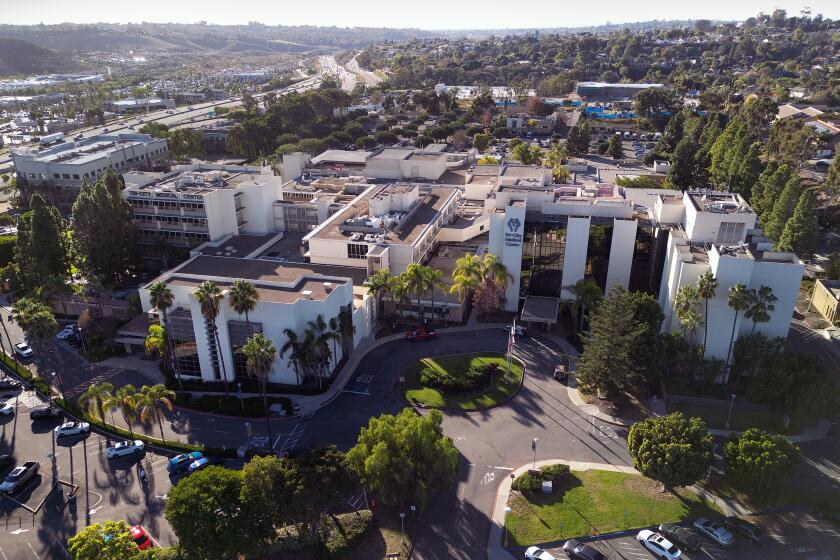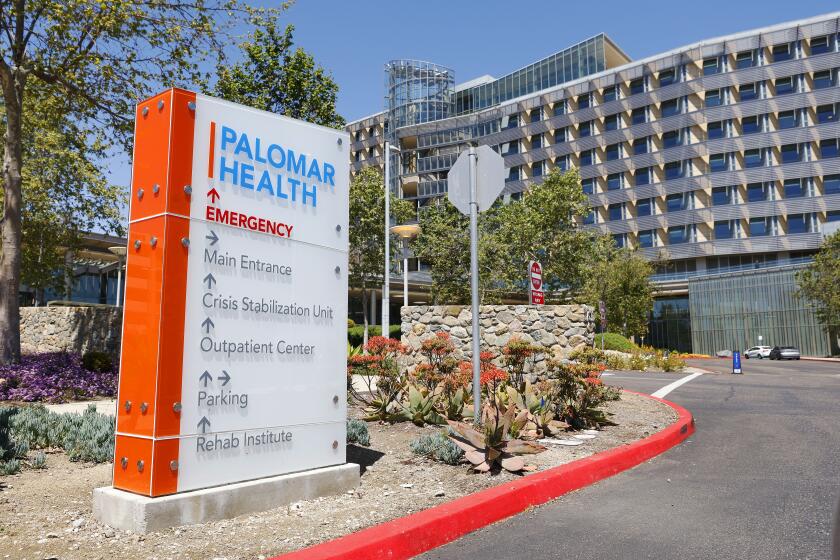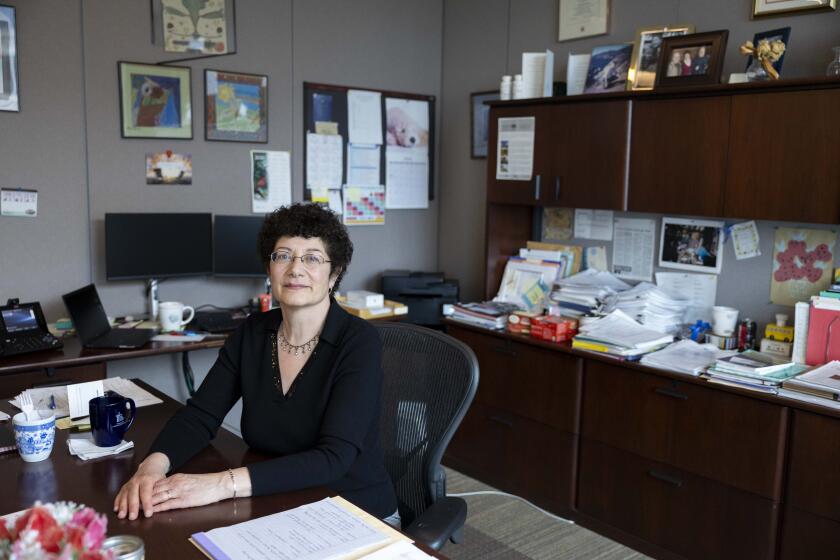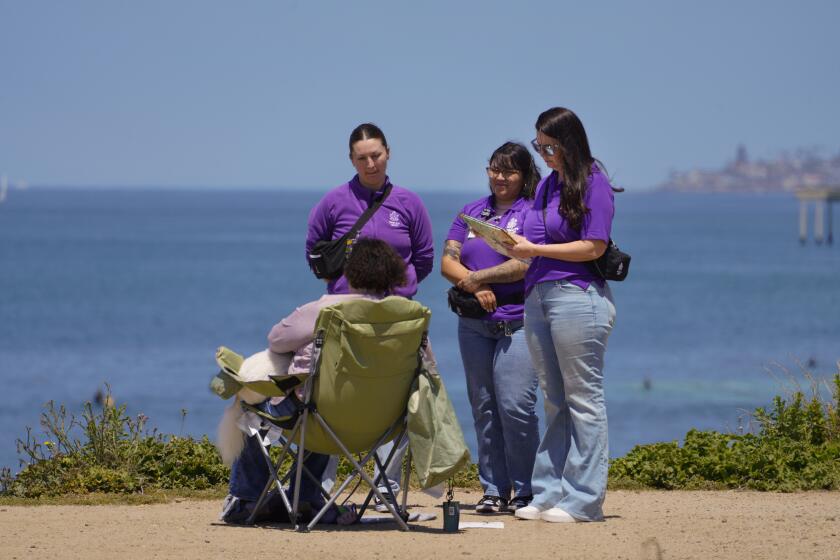County: 3 in county under Ebola monitoring
As the state issued a new quarantine order on Wednesday for travelers returning from West Africa, San Diego County is monitoring three people for symptoms of the disease, a public health official confirmed Wednesday evening.
The three individuals have a low risk of infection, according to the county Health and Human Services Agency.
They are among 19 statewide being monitored in 11 counties across California, according to a statement made by the California Department of Public Health. Only one person statewide, the statement adds, is “currently subject to a county quarantine at home with monitoring by the local health department, and poses no risk to the community.”
The state did not identify which county has the quarantined individual.
In Southern California, Riverside and Orange counties have each confirmed monitoring two people but all four are said to be low risk.
No Ebola case has yet been confirmed in California.
The new monitoring information came just as Dr. Ron Chapman, the state’s public health officer, issued a new order that requires local public health agencies to quarantine anyone assessed to meet “high risk” or “some risk” categories listed in recent monitoring regulations released by the U.S. Centers for Disease Control and Prevention.
Though not as strict as the controversial quarantines enacted in states including New York and New Jersey, the order does give local health agencies firmer direction on who should be isolated.
Anyone who has been in Guinea, Sierra Leone or Liberia within the last 21 days, and had direct contact with a symptomatic Ebola patient, is on the shortlist for quarantine.
Those who had unprotected contact with a patient’s bodily fluids, or who suffered a medical mishap like a “needle stick” while caring for a patient, are in the “high risk” category that would be quarantined immediately.
Chapman’s order also calls for a second category of people, those deemed to have only some risk of infection, to be identified for quarantine orders. This group includes aid workers who have cared for symptomatic Ebola patients while wearing full protective gear and following strict infection-control policies.
For this group, the CDPH has granted local health officers more leeway in deciding how much isolation is warranted.
“Although quarantine can involve isolation at home, it may be tailored to allow for greater movement of individuals who are deemed to be at lower risk,” the state said in a statement Wednesday morning.
Chapman added in the same statement that “not everyone who has been to an Ebola-affected area should be considered high-risk. This order will allow health officers to determine, for those coming into California, who is most at risk for developing this disease, and to contain any potential spread of infectious disease by responding to those risks appropriately.”
Failure to comply with a quarantine order can result in a civil penalty, imprisonment or a fine.
Who gets quarantined and who doesn’t became a national flash point after Maine resident and Doctors Without Borders nurse Kaci Hickox spent three days in an isolation tent at a New Jersey hospital after returning from Sierra Leone even though she showed no symptoms of the disease.
On Wednesday the nurse clashed with Maine public health officials after saying publicly that she did not intend to obey a 21-day quarantine order because she considered it unnecessary. Maine’s health commissioner countered Wednesday that state law enforcement would arrest the nurse if she left her home and her legal team fired back that they would take the matter to court if necessary.
Get Essential San Diego, weekday mornings
Get top headlines from the Union-Tribune in your inbox weekday mornings, including top news, local, sports, business, entertainment and opinion.
You may occasionally receive promotional content from the San Diego Union-Tribune.












